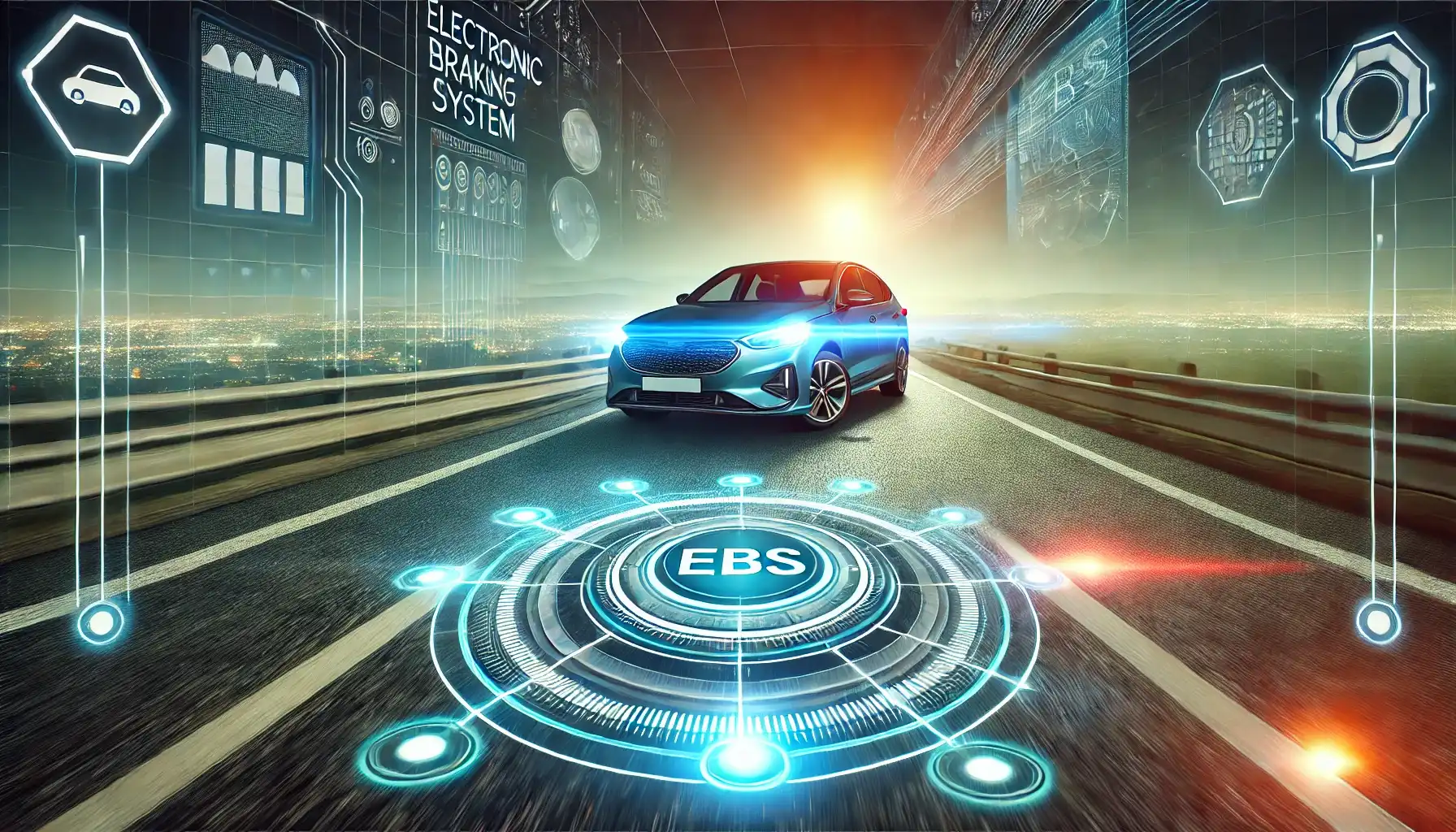The automotive industry continually seeks innovations to improve safety, efficiency, and performance. One significant advancement in this quest is the Electronic Braking System (EBS). This system replaces traditional hydraulic brakes with electronically controlled components, offering enhanced precision, reliability, and integration with other vehicle systems. In this article, we explore what an electronic braking system is, how it works, its benefits, challenges, and future trends in braking technology.
Table of Contents
What is an Electronic Braking System?
An Electronic Braking System (EBS) is an advanced braking technology that utilizes electronic controls to manage the braking force applied to a vehicle. Unlike conventional braking systems that rely solely on hydraulic pressure generated by pedal force, EBS employs electronic sensors, actuators, and control units to modulate braking, providing quicker and more consistent responses.
Key Components of an EBS
Electronic Control Unit (ECU)
The ECU is the brain of the electronic braking system. It receives input from various sensors, processes that data, and sends commands to the braking actuators to control the brake force.
Sensors
Sensors within the system monitor factors such as wheel speed, brake pedal pressure, vehicle speed, and steering angle. This data enables precise calculations for optimal braking performance.
Actuators and Brake Calipers
Actuators, often electric motors or solenoids, convert signals from the ECU into physical force at the brake calipers, engaging the brake pads with the rotors to slow down or stop the vehicle.
User Interface
Drivers interact with the EBS through the brake pedal and potentially dashboard indicators, which provide feedback on brake status, warnings, and system performance.
How Does an Electronic Braking System Work?
Data Collection and Processing
- Sensor Input: When a driver presses the brake pedal, sensors collect data on the pressure applied, wheel speeds, and other dynamic variables.
- Signal Transmission: This information is transmitted to the Electronic Control Unit.
- ECU Processing: The ECU uses sophisticated algorithms to analyze the sensor data in real-time, determining the optimal braking force distribution.
Brake Force Application
- Command Signals: Based on its analysis, the ECU sends command signals to the actuators at each wheel.
- Actuator Response: Actuators adjust the brake calipers accordingly, applying the correct amount of force to each wheel.
- Feedback Loop: The system continuously monitors sensor inputs, adjusting the braking force as necessary to maintain stability and efficiency.
Integration with Other Systems
Modern EBS often integrates with other vehicle safety systems such as:
- Anti-lock Braking System (ABS): Prevents wheel lock-up during hard braking.
- Electronic Stability Control (ESC): Maintains vehicle stability by adjusting braking force on individual wheels.
- Traction Control Systems (TCS): Reduces wheel spin under acceleration by modulating brakes.
This integration enhances overall vehicle safety by providing a coordinated response during critical driving situations.
Benefits of an Electronic Braking System
Enhanced Safety and Control
Precision and Consistency
EBS offers more precise and consistent braking than traditional systems. The ECU can adjust braking force to each wheel independently, reducing the risk of skidding or loss of control, especially on slippery surfaces.
Shorter Stopping Distances
Advanced algorithms and quicker response times can lead to shorter stopping distances, giving drivers more control in emergency situations.
Improved Vehicle Dynamics
Load and Weight Distribution
EBS can automatically adjust braking force based on vehicle load and weight distribution, ensuring balanced and stable stops regardless of cargo or passenger configuration.
Adaptive Braking
Some systems can adapt to different driving conditions, such as wet roads or downhill slopes, by adjusting brake pressure dynamically, enhancing overall control.
Maintenance and Efficiency
Reduced Wear and Tear
Electronic controls optimize brake usage, reducing unnecessary friction and wear on brake pads and rotors. This leads to lower maintenance costs over time.
Diagnostics and Alerts
EBS often includes self-diagnostic features that alert drivers to potential issues before they become serious, improving maintenance planning and vehicle longevity.
Challenges and Considerations
Complexity and Cost
Higher Initial Investment
The advanced technology involved in EBS can lead to higher initial costs compared to traditional braking systems. However, these costs are often offset by improved safety and reduced maintenance expenses over the vehicle’s lifetime.
Technical Complexity
The integration of electronic components introduces complexity. Manufacturers must ensure high reliability, and service technicians require specialized training to diagnose and repair EBS-related issues.
Reliability and Redundancy
System Failures
As with any electronic system, there is a risk of component failure. To mitigate this, EBS designs often include redundant systems and fail-safe mechanisms to ensure that, in the event of a malfunction, the vehicle still retains basic braking capability.
Cybersecurity
Since EBS can integrate with other vehicle networks, there is a potential risk of cybersecurity threats. Manufacturers must implement robust security measures to protect the system from unauthorized access or manipulation.
Future Trends in Electronic Braking Systems
Integration with Autonomous Driving
As vehicles become more autonomous, electronic braking systems will play a crucial role in automated emergency braking (AEB) and collision avoidance. Future EBS designs will be more closely integrated with sensors and AI algorithms that allow vehicles to anticipate and react to hazards without human intervention.
Artificial Intelligence and Predictive Maintenance
AI can analyze vast amounts of data from EBS to predict potential component failures before they occur. This predictive maintenance will further reduce downtime and improve safety by addressing issues proactively.
Enhanced Connectivity and Vehicle-to-Everything (V2X) Communication
Future electronic braking systems may communicate with other vehicles and infrastructure (V2X), allowing for coordinated braking responses in traffic, reducing accidents, and improving traffic flow efficiency.
Conclusion
The Electronic Braking System represents a significant leap forward in automotive safety and performance. By leveraging advanced electronics, sensor data, and intelligent control algorithms, EBS offers precise, reliable, and adaptive braking capabilities that enhance vehicle safety, efficiency, and driving experience. Despite challenges such as complexity and cybersecurity concerns, ongoing advancements in technology promise to make electronic braking systems even more integral to the future of transportation.
Trusted Resource: For more detailed technical information on electronic braking systems and automotive safety technology, visit Bosch Automotive.

